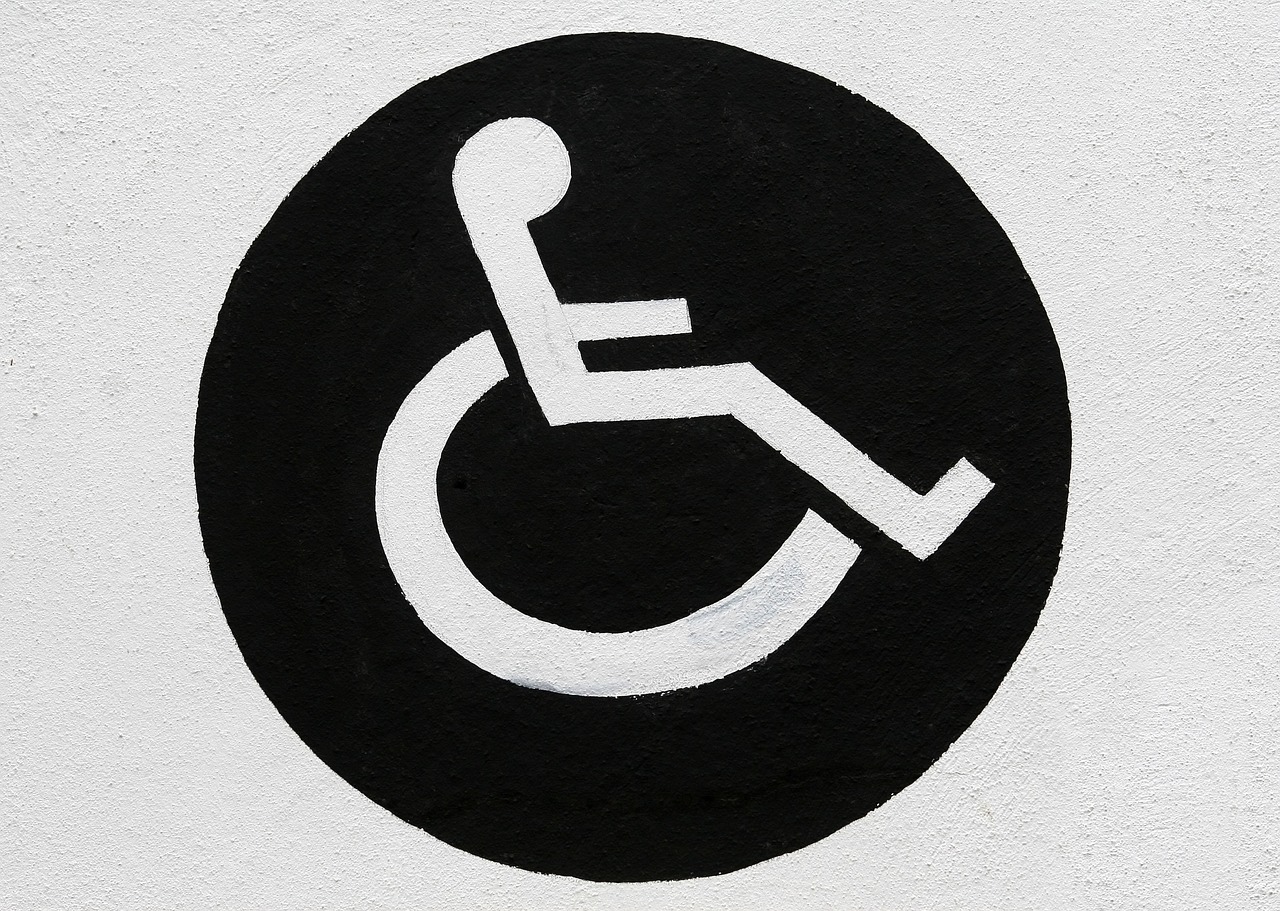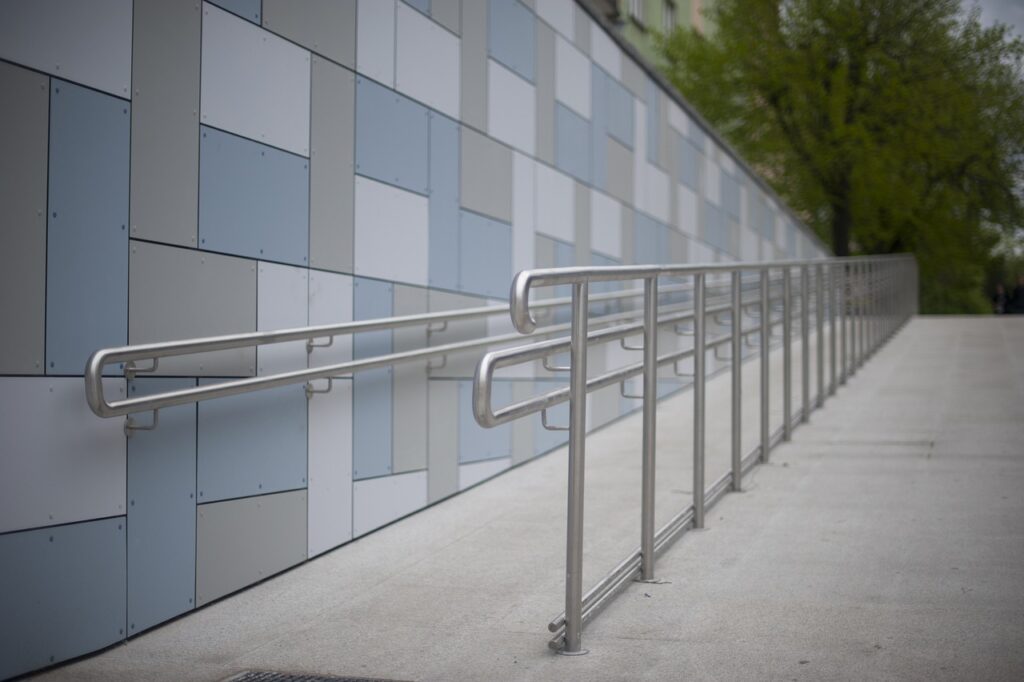Accessible Parking Signs: Best Practices for Clarity and Compliance

Accessible parking signs serve a crucial role in ensuring that people with disabilities have equitable access to parking spaces. These signs communicate essential information about the availability and proper use of handicap parking spaces, guiding both drivers and pedestrians.
In this article, we’re covering the best practices for creating clear and compliant accessible parking signs, while also addressing the relevant regulations and guidelines, including ADA compliance.
The Importance of Accessible Parking Signs
Accessible parking signs are not just informational; they are symbols of inclusivity and accessibility. When designed and placed correctly, these signs contribute to the well-being and mobility of people with disabilities in several ways:
Clarity:
Accessible parking signs clearly designate parking spaces reserved for people with disabilities. This clarity ensures that these spaces are readily identifiable, minimizing confusion and disputes over parking rights.
Safety:
Well-placed accessible parking signs promote safety by indicating where pedestrians with disabilities may be present. This awareness helps drivers exercise caution and yield the right-of-way as needed.
Convenience:
Accessible parking signs guide people with disabilities to parking spaces that are strategically located near building entrances. This convenience reduces the distance they need to travel and enhances their overall experience.
Legal Compliance:
ADA compliant parking signs are essential for legal compliance. Businesses and property owners must adhere to these regulations to avoid potential lawsuits and fines.
ADA Compliant Parking Signs
The Americans with Disabilities Act (ADA) sets forth specific requirements for accessible parking signs to ensure uniformity and clarity. Compliance with these regulations is essential for legal reasons and to guarantee that people with disabilities can confidently use parking facilities. Here are key elements of ADA compliant parking signs:
1. Accessible Parking Symbol:
The ADA requires the use of the International Symbol of Access (ISA), which depicts a person in a wheelchair. This symbol should be prominently displayed on all accessible parking signs.
2. Color and Contrast:
ADA compliant signs should have a white symbol on a blue background, providing high contrast for visibility. Additionally, the text, if present, should be in a color that contrasts with the blue background.
3. Minimum Height and Size:
The ISA should be at least 48 inches above the ground, ensuring visibility from a distance. The size of the sign itself should be consistent with ADA standards, typically measuring 12 inches by 18 inches or larger.
4. Mounting Location and Height:
Accessible parking signs should be mounted at the head of the parking space or in an adjacent access aisle. They should be positioned so that the bottom edge of the sign is at least five feet above the ground.
5. Text and Pictogram Format:
In addition to the ISA, some ADA compliant signs may include text such as “Accessible Parking” or “Van-Accessible.” These should be in easily readable fonts and braille should be included for tactile information.
6. Towing Information:
Some signs may include information about towing for unauthorized parking. Such text, if present, should comply with ADA requirements for font size, spacing, and contrast.
Handicap Parking Regulations
In addition to federal ADA regulations, many states and local municipalities have their own regulations regarding accessible parking signage. For example, handicap parking signage requirements in Connecticut may be slightly different than the rules around accessible parking signs in Georgia.
It is crucial to be aware of and comply with these regulations, as they may impose additional requirements or variations in design.
Clear Parking Signage
Creating clear and effective parking signage goes beyond ADA compliance. The goal is to make parking facilities universally accessible and user-friendly. Here are some best practices for creating clear parking signs:
1. Clear Language:
Use clear and straightforward language on parking signs. Avoid jargon or abbreviations that may confuse drivers or pedestrians.
2. Pictograms:
Whenever possible, use symbols or pictograms in addition to text. Symbols, like the ISA, are easily recognizable and transcend language barriers.
3. Large and Legible Text:
If text is necessary, ensure it is large enough to read from a distance and that it uses a font that is easy to read.
4. Contrast and Visibility:
Ensure that the sign’s color scheme and contrast provide optimal visibility. High-contrast colors and bold symbols enhance visibility.
5. Positioning:
Place signs at a height and location where they are easily seen by both drivers and pedestrians. Avoid obstructions or distractions that might obscure the sign.
6. Consistency:
Maintain consistency in the design and placement of parking signs throughout a parking facility. This reduces confusion and helps users quickly identify accessible spaces.

Accessible Parking Guidelines
Apart from the regulatory aspects, following accessible parking guidelines can further enhance the user experience and ensure equitable access. The following guidelines should be considered:
1. Number of Accessible Spaces:
Ensure that the parking facility provides the required number of accessible parking spaces based on local regulations and the size of the facility.
2. Van-Accessible Spaces:
In addition to standard accessible parking spaces, provide van-accessible spaces with extra width to accommodate wheelchair-accessible vans.
3. Access Aisles:
Access aisles adjacent to accessible parking spaces should be kept clear of obstructions. These areas are essential for people with disabilities to deploy mobility devices like wheelchairs or scooters.
4. Ramps and Curb Cuts:
Ensure that ramps and curb cuts leading from accessible parking spaces to building entrances are properly designed, maintained, and free of obstacles.
5. Pathways:
Clear and accessible pathways should lead from parking areas to building entrances. These pathways should be well-lit and kept free of debris.
Parking Signage Compliance
Compliance with ADA regulations and accessible parking guidelines is not only a legal requirement but also a moral imperative. Failure to adhere to these standards can result in penalties, legal actions, and most importantly, it can create barriers for people with disabilities, limiting their access to essential services and opportunities.
To maintain compliance, consider conducting regular inspections of parking signs and facilities to ensure that signs are in good condition, properly placed, and clearly visible. Address any issues promptly, including faded signs or damaged posts.
Universal Design Parking Signs
Universal design principles promote the idea that products and environments should be accessible and usable by people of all ages and abilities. Applying universal design to parking signs means creating signs that are intuitive and user-friendly for everyone, regardless of their level of mobility or sensory abilities.
Universal design parking signs may incorporate features such as:
1. High Visibility:
Signs with bold colors and high-contrast elements are easier to see, helping people with visual impairments.
2. Tactile Features:
Incorporate tactile elements like braille or raised characters to provide information through touch, aiding people with visual impairments.
3. Clear Symbols:
Use symbols and pictograms that are universally recognized and easily understood by people of various cultures and backgrounds.
4. Simple Language:
Keep any text concise and straightforward, making it easy to understand for all users.
Best Practices for Parking Signage
Creating accessible parking signs that are clear, compliant, and universally designed involves a combination of adherence to regulations, following best practices, and considering the needs of all users. Here are some best practices to keep in mind:
Understand Regulations:
Familiarize yourself with federal, state, and local regulations governing accessible parking signage, including ADA requirements and any additional guidelines specific to your area.
Regular Maintenance:
Inspect and maintain parking signs regularly to ensure they remain visible, in good condition, and compliant with regulations.
Clear and Simple Design:
Prioritize clarity and simplicity in design, using easily recognizable symbols, high-contrast colors, and legible fonts.
Accessibility Audits:
Conduct accessibility audits of parking facilities to identify areas for improvement and compliance with accessibility guidelines.
User Feedback:
Seek feedback from people with disabilities and advocacy groups to understand their specific needs and preferences regarding parking signage.
Universal Design:
Embrace universal design principles to create signage that is intuitive and user-friendly for all individuals, regardless of their abilities.
Education and Awareness:
Educate staff, property owners, and the public about the importance of accessible parking and proper signage.
By following these best practices, parking facilities can create an inclusive and welcoming environment that respects the rights and needs of people with disabilities.
***
Accessible parking signs are more than just markers; they are symbols of inclusion and equity. When designed and placed correctly, these signs facilitate clarity, safety, and convenience for people with disabilities, ensuring they have equitable access to parking spaces.
To achieve this, compliance with ADA regulations, state and local guidelines, and universal design principles is essential. By adhering to these standards and best practices, parking facilities can create a universally accessible environment that benefits everyone, regardless of their level of mobility or sensory abilities.
Looking for more information on disabled parking in the US? From how to apply for a temporary disability parking permit in Maryland to understanding handicap parking enforcement in Nevada, we’ve covered a ton of detailed topics on the Dr Handicap blog. Check it out today!
Featured image by Robert Owen-Wahl from Pixabay.